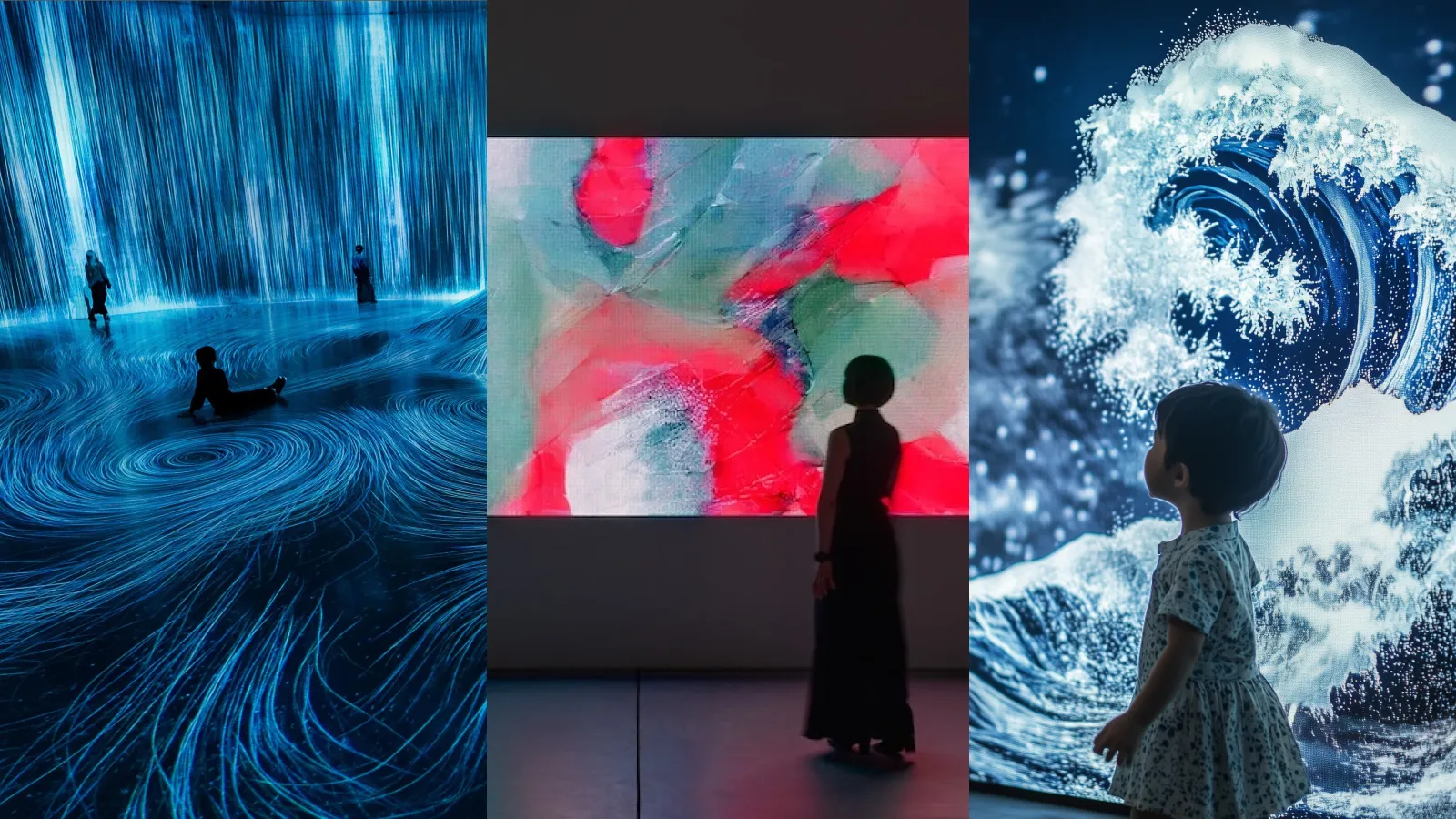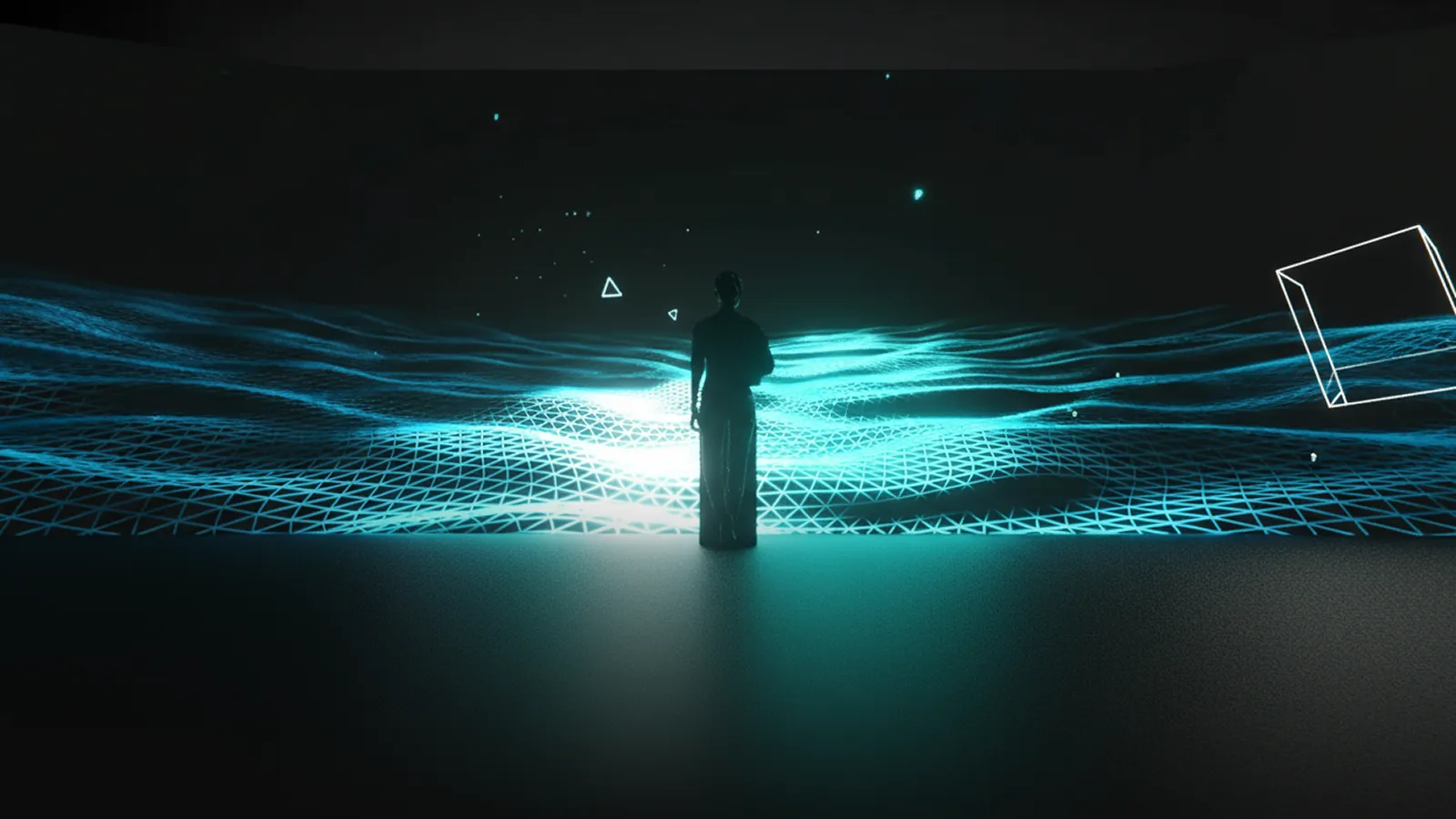How We Evaluated Studios
When shortlisting Japanese interactive installation partners, we focused on:
- Proven build quality (creative tech + physical integration)
- Realtime graphics and sensors (WebGPU/Three.js, Unreal/Unity, TouchDesigner, custom hardware)
- Operational reliability (on-site support, safety, monitoring)
- Cross-border production (English-friendly process, global clients)
- Signature work (public/cultural venues, brand flagships, expos)
Japan’s Top Interactive Installation Studios (Buyer’s Shortlist)
Format per studio: Snapshot • What they’re great at • Best for
1) Utsubo — Osaka / Global
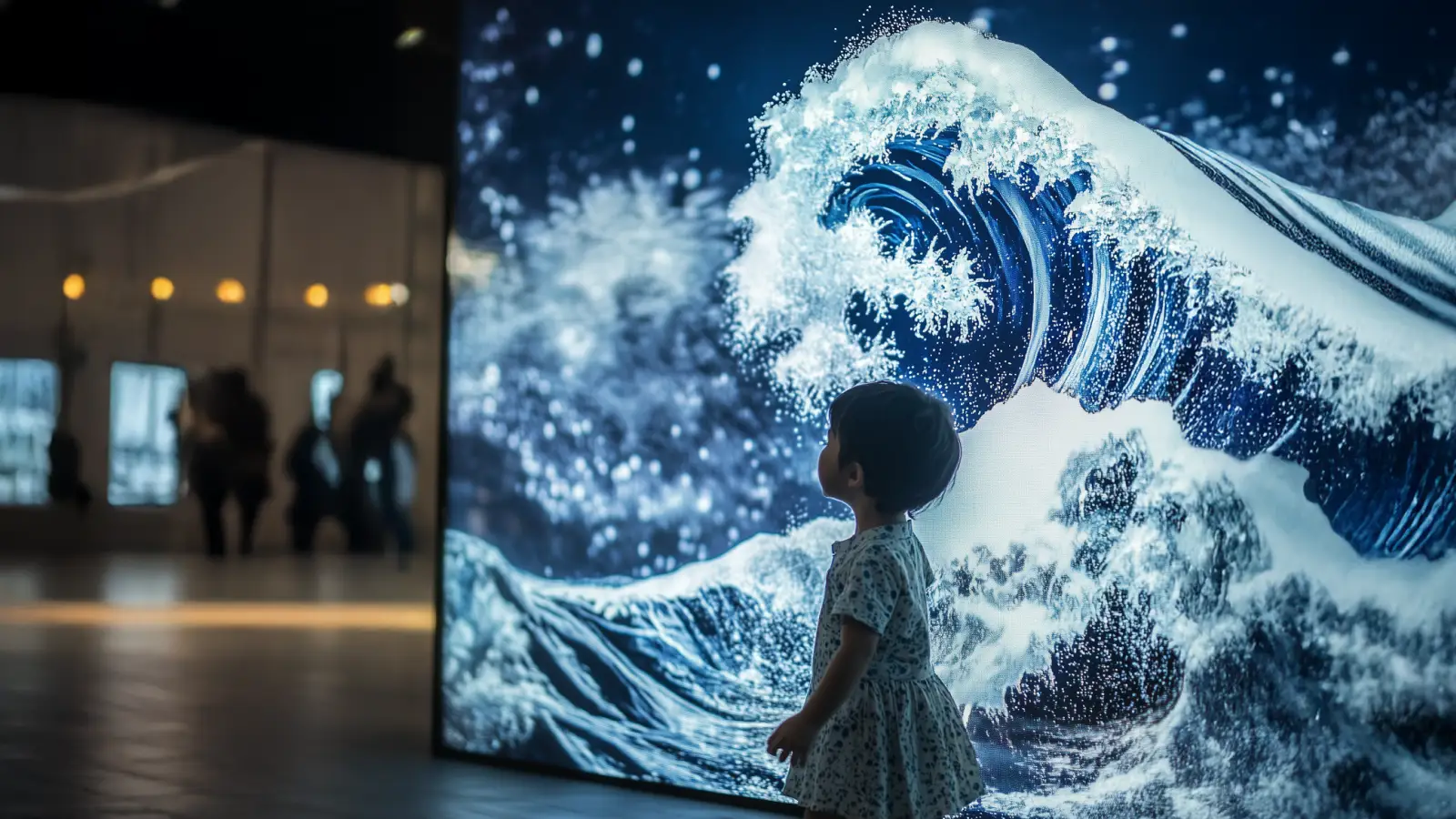
Snapshot: Technology-first creative studio delivering real-time 3D web and large-format interactive installations, with an international team experienced in cross-border production.
Great at: WebGPU/WebGL/Three.js pipelines. Sensor (vision, depth, touch, motion), multi-screen walls, spatial audio. Global collaboration (English-first process, timezone-aware PM, transparent technical documentation)
Best for: Global brands and cultural venues needing high-fidelity visuals, robust on-site ops, and seamless web-to-physical integration.
2) teamLab — Tokyo / Global

Snapshot: World-renowned for immersive, room-scale art installations and permanent museums.
Great at: Multi-room generative environments, responsive light systems, museum-grade throughput.
Best for: Landmark cultural builds and high-impact brand showcases.
3) Rhizomatiks — Tokyo

Snapshot: R&D-heavy studio at the intersection of art, performance, and computation.
Great at: Experimental interfaces, live performance tech, complex data-driven visuals.
Best for: Avant-garde installations, performances, and R&D collaborations.
4) NAKED, Inc. — Tokyo / Kyoto
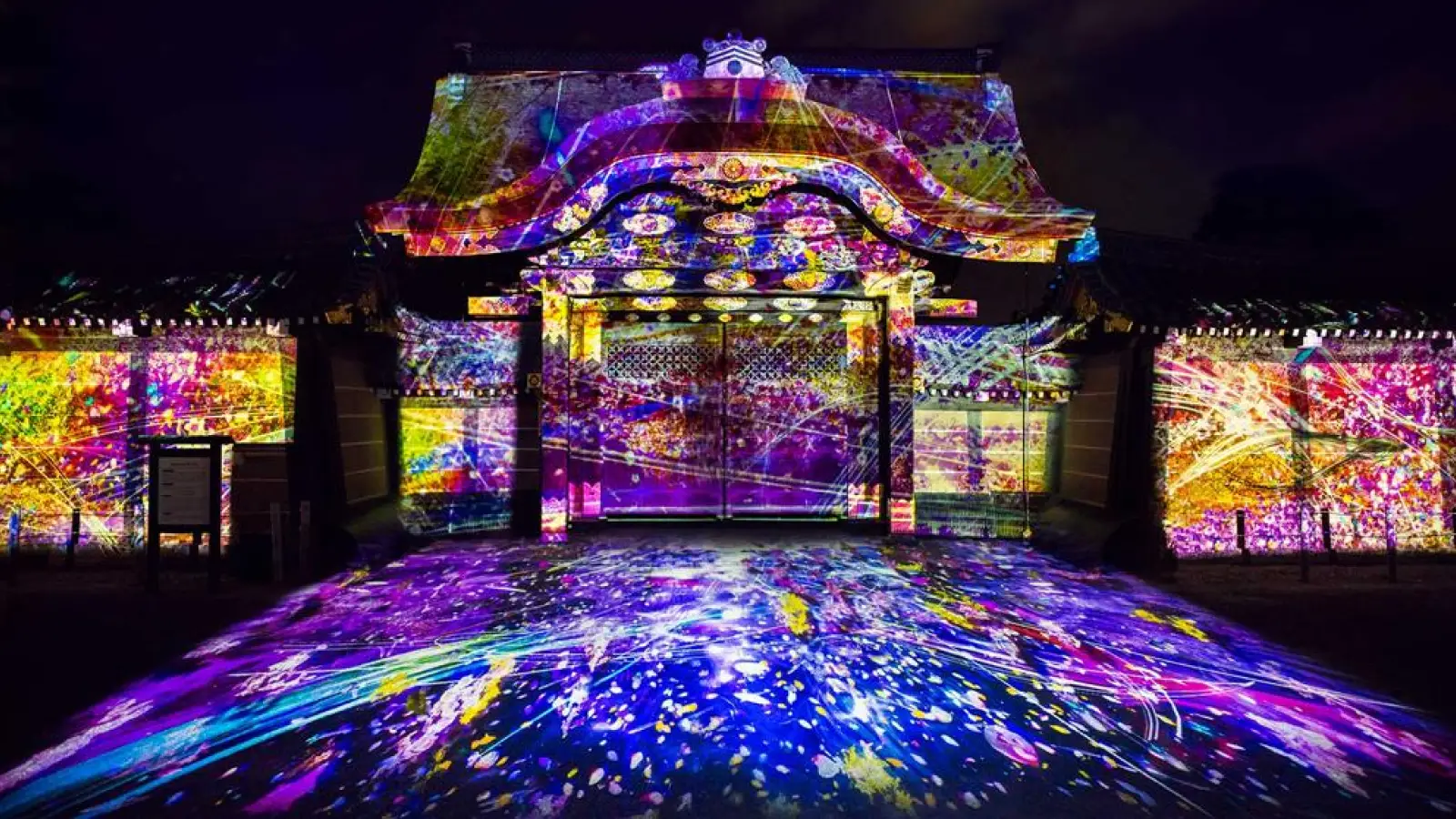
Snapshot: Projection-mapping specialists with seasonal/pop-up and heritage-site experience.
Great at: Architectural mapping, family-friendly cultural events, tourist venues.
Best for: Large-scale projection shows and photogenic public activations.
5) WOW inc. — Tokyo / Sendai / London
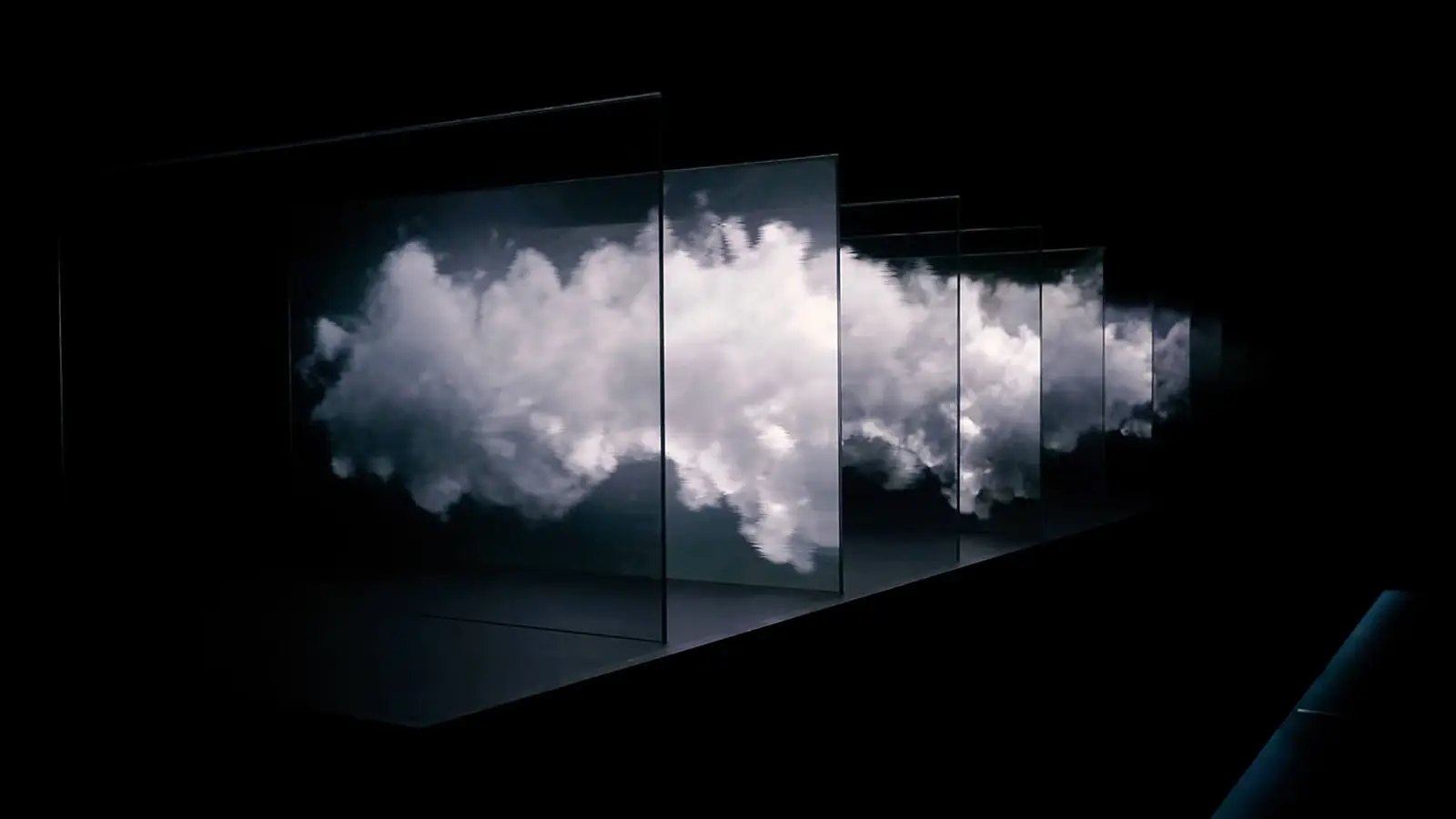
Snapshot: Motion/visual design studio with interactive practice.
Great at: Refined visual direction, brand-centric experiences, gallery aesthetics.
Best for: Premium retail and museum spaces needing polish and narrative design.
6) Dentsu Lab Tokyo — Tokyo

Snapshot: Creative tech lab with rapid prototyping muscle and brand access.
Great at: Novel interfaces, experimental sensing, PR-worthy prototypes.
Best for: Futuristic concepts, experiential activations, and innovation showcases.
7) Whatever Co. — Tokyo / Seoul / New York

Snapshot: Cross-border creative production studio combining digital and physical craftsmanship.
Great at: Integrated campaigns, playful physical-digital installations, brand storytelling.
Best for: Global campaigns that need Japanese execution quality.
8) 1→10 (One to Ten) — Kyoto / Tokyo

Snapshot: Experiential/projection experts for events, heritage, and retail.
Great at: Narrative-first shows, multi-projector orchestration, venue operations.
Best for: Cultural venues and premium retail spectacles.
9) BASSDRUM — Tokyo (Tech Direction Collective)

Snapshot: Technical directors who architect and stabilize complex builds.
Great at: System design, vendor coordination, and making “impossible” installs shippable.
Best for: Projects needing strong technical oversight across many suppliers.
Why Commission in Japan
- Build quality: Japanese studios are known for precision, safety, and craftsmanship.
- Predictable delivery: Reliable vendor networks for AV, fabrication, and venue coordination.
- Cost efficiency: Depending on scope and timing, Japan-based production can be budget-friendly versus US/Europe while maintaining premium quality.
- Cross-border fluency: Many teams are accustomed to English-language briefs and international brand workflows.
What to Ask Before You Hire (Selection Checklist)
- Content pipeline: Who owns 3D/interactive content, and how are updates shipped?
- Sensors & interactivity: Which sensors are used (LiDAR, ToF, cameras, capacitive, RFID)?
- Realtime stack: Why choose WebGPU/Three.js vs. Unreal/Unity vs. TouchDesigner?
- Safety & throughput: Visitor flow, ADA/JIS standards, and emergency protocols.
- Ops plan: Remote monitoring, fallback modes, on-site staffing, and maintenance.
- Data & privacy: Camera/sensor data handling, signage, and anonymization.
- Handover: Drawings, source files, training, and maintenance calendars.
Typical Timelines & Budget Ladders (Directional)
| Project Type | Timeline | Description |
|---|---|---|
| Prototype / Pilot | 4–8 weeks | One interactive object or screen; limited sensors; reusable codebase |
| Event Pop-up | 8–16 weeks | Multi-screen or small room, show control, queueing logic, on-site ops |
| Permanent Gallery / Flagship | 3–6+ months | Multi-room, custom hardware, facility integration, monitoring |
Budgets vary based on venue, fabrication, and staffing. Always request transparent, line-item quotes.
How Utsubo Works With International Clients
- English-first production: Requirements, risks, and progress clearly documented.
- Proof-before-build: Rapid prototypes with hosted demos for validation.
- On-site reliability: Redundant hardware, monitoring, and easy recovery.
- World Expo 2025 execution: Experience delivering Expo-scale installations ensures reliability and performance for global clients.
- International team: Multicultural creative technologists based in Japan and abroad, bridging time zones and communication styles seamlessly.
Planning a project?
Contact Utsubo for a scoped approach and cost options based on your brief.
FAQ
How far in advance should I start?
For pop-ups, 8–12 weeks is workable if approvals are fast. For permanent rooms, plan 3–6+ months.
Can you localize for Japan and still present globally?
Yes. Most studios deliver bilingual UI/UX and localized signage to balance global brand and local audience needs.
What venues work best?
Museums, brand flagships, airports, and cultural halls. Early venue coordination saves time and cost.
What about maintenance?
Include remote monitoring, monthly content refreshes, and spare-part kits. Permanent installs need scheduled maintenance.
